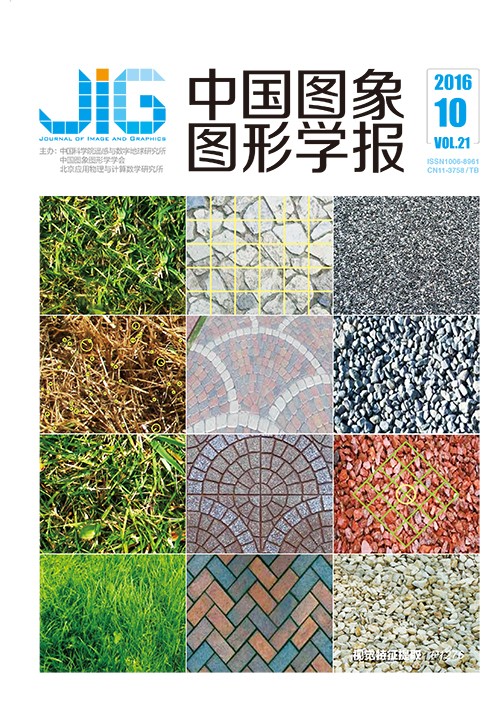
模糊熵的区域合并和图割的快速矿岩分割
尹诗白1, 王一斌2, 李大鹏1, 邓箴3, 王玥1(1.西南财经大学经济信息工程学院, 成都 611130;2.西北工业大学自动化学院, 西安 710072;3.宁夏大学信息工程学院, 银川 750021) 摘 要
目的 针对现有区域合并和图割的结合算法没有考虑矿岩图像模糊特性,导致分割精度和运行效率较低,模糊边缘无法有效分割的问题,利用快速递推计算的最大模糊2-划熵信息设置以区域为顶点的图割模型似然能来解决。方法 首先利用双边滤波器和分水岭算法对矿岩图像进行预处理,并将其划分为若干一致性较好的区域;然后利用图像在计算最大模糊2-划分熵时,目标和背景的模糊隶属度函数来设计图割能量函数似然能,使得能量函数更接近模糊图像的真实情况,期间为了提高最大模糊2-划分熵值的搜索效率,提出了时间复杂度为O(n2)的递推算法将模糊熵的计算转化为递推过程,并保留不重复的递推结果用于后续的穷举搜索;最后利用设计的图割算法对区域进行标号,以完成分割。结果 本文算法的分割精度较其他区域合并和图割结合算法提高了约23%,分割后矿岩颗粒个数的统计结果相对于人工统计结果,其误差率约为2%,运行时间较其他算法缩短了约60%。结论 本文算法确保精度同时,有效提高矿岩图像的分割效率,为自动化矿岩图像高效分割的工程实践提供重要指导依据。
关键词
Fast rock particle segmentation based on region merging and graph cut of fuzzy entropy
Yin Shibai1, Wang Yibin2, Li Dapeng1, Deng Zhen3, Wang Yue1(1.School of Economic Information Engineering, Southwestern University of Finance and Economics, Chengdu 611130, China;2.School of Automation, Northestern Polytechnical University, Xi'an 710072, China;3.School of Information Engineering, Ningxia University, Yinchuan 750021, China) Abstract
Objective Low efficiency, low-segmentation precision, and invalid blurry-edge segmentation are due to disregarding fuzzy image features when combining region-merging and graph-cut (GC) algorithms. To solve these problems, we propose a method that uses information of maximum fuzzy two-partition entropy. The information is acquired by recursive computation to design the likelihood item of energy function in GC, in which the model is built based on the region as vertex. Method First, bilateral filter and watershed algorithm are used to pre-process the image to oversegment the input image into small regions. Second, based on maximum fuzzy 2-partition entropy of rock particle, corresponding membership functions can be used for setting the GC likelihood item. This way, more real energy functions can be acquired. Meanwhile, to improve the efficiency search of maximum fuzzy 2-partition entropy, a recursive algorithm with time complexity O(n2) is presented to convert the fuzzy entropy computation to a recursive process; and non-repetitive results of processing moments are stored for the succeeding exhaustive optimization. Finally, designed-region merging and GC are used to assign region labels and complete segmentation. Result Experimental results indicate that the segmentation precision of the proposed algorithm improves by about 23%, and running time is 60% shorter than those of compared region-merging and GC algorithms. Relative error of our statistical results is 2%, with respect to those of artificial statistical results. Conclusion Our proposed method can improve segmentation efficiency while ensuring segmentation precision. The results provide an important reference for engineering practice of automatic and efficient rock particle segmentation.
Keywords
|



 中国图象图形学报 │ 京ICP备05080539号-4 │ 本系统由
中国图象图形学报 │ 京ICP备05080539号-4 │ 本系统由